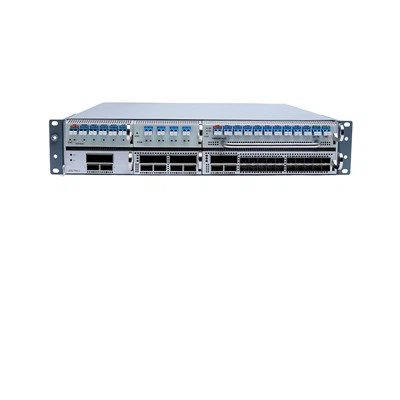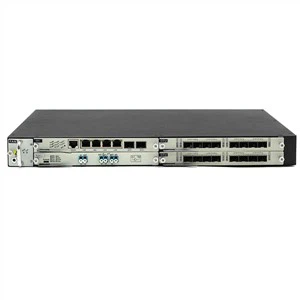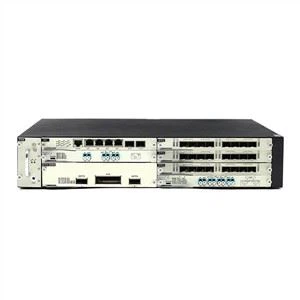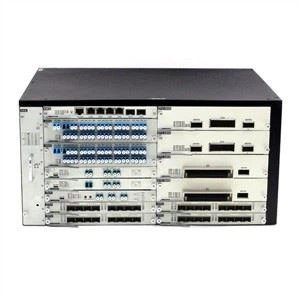With the diversified development of optical fiber transceiver products, their classification methods are also different, but there is a certain correlation between the various classification methods.
By rate
It can be divided into single 10M, 100M, 1000M, 10G optical fiber transceivers, 10/100m adaptive, 10/100/1000m adaptive optical fiber transceivers.
Most of the single 10M, 100M and 1000M transceiver products work in the physical layer, where the transceiver products work bit-by-bit to forward data.
This forwarding mode has the advantages of fast forwarding speed and low delay, and is suitable for the fixed rate link. While 10/100M and 10/100/1000M optical fiber transceivers work at the data link layer and use the store-and-forward mechanism. In this way, each packet received by the forwarding mechanism should read its source MAC address, destination MAC address and data net charge, and the packet will be forwarded after CRC cyclic redundancy check is completed.
Store-and-forward benefits way can prevent some wrong frame transmission in the network, take up valuable network resources, but also is a good way to prevent the packet loss due to network congestion, when data link saturation can store and forward will not be able to forward data in the cache in the transceiver (first, wait for forwarding network idle again. This not only reduces the possibility of data conflict but also ensures the reliability of data transmission. Therefore, 10/100M and 10/100/1000M optical fiber transceivers are suitable for working on the link with variable rate.
According to the way of work to divide
As mentioned above, it can be divided into optical fiber transceivers working at the physical layer and optical fiber transceivers working at the data link layer.
It can be divided into desktop type (independent) optical fiber transceiver and rack type optical fiber transceiver. Desktop type optical fiber transceiver is suitable for single user (and built-in power transceiver and external power transceiver), such as to meet the upper connection of a single switch in the corridor. Racking fiber transceiver is suitable for multi-user convergence. For example, the central computer room of the community must meet the upper connection of all switches in the community. The use of the rack is easy to realize the unified management and unified power supply of all modular fiber transceivers.
Divide by optical fiber
It can be divided into multimode fiber transceiver and single-mode fiber transceiver. Depending on the optical fiber used, the transceivers can transmit different distances. Multimode transceivers typically transmit between 2 and 5 kilometers, while single-mode transceivers can cover ranges from 20 to 120 kilometers.
It should be pointed out that the transmitting power, receiving sensitivity and wavelength of optical fiber transceivers themselves will be different due to the different transmission distances. For example, the transmitting power of the 5km optical fiber transceiver is generally between -20 ~ -14dB, the receiving sensitivity is -30dB, and the wavelength of 1310nm is used. Whereas, the transmitting power of 120km optical fiber transceivers is mostly between -3 ~ 0dB, the receiving sensitivity is less than -36dB, and the wavelength of 1550nm is used.
Divide by the number of optical fibers
It can be divided into single fiber transceiver and double fiber transceiver. As the name suggests, a single-fiber device can save half of the optical fiber, that is, data can be received and sent on a single optical fiber, which is very useful in places where fiber resources are limited. Such products adopt the technology of wavelength division multiplexing, which mostly uses the wavelengths of 1310nm and 1550nm for short distance transmission (0-60km) and 1490nm and 1550nm for long distance transmission (60km-120km). With the increasing use of single fiber optic transceivers, the products have become mature and stable.
Divide by power supply
It can be divided into built-in power supply and external power supply. The built-in switching power supply is a carrier-class power supply, while the external transformer power supply is mostly used in civil equipment. The advantage of the former is that it can support ultra-wide power supply voltage, better realize voltage regulation, filtering and equipment power protection, and reduce external fault points caused by mechanical contact. The advantage of the latter is the small size of the equipment, easy to use the 14-slot rack centralized management and low price.
In addition, from the type of power supply voltage of the equipment, there are AC 220V, 110V, 60V; DC -48V, 24V, etc.
Press network management to divide
It can be divided into network tube type fiber optic transceiver and non - network tube type fiber optic transceiver. With the development of network to be operable and manageable, most operators hope that all the equipment in their network can be managed remotely. Fiber optic transceiver products, like switches and routers, are also developing in this direction gradually. The fiber-optic transceivers with network management can also be subdivided into local network management and client network management. The fiber-optic transceivers that can be managed at the bureau end are mainly rack type products, which mostly adopt the master-slave management structure, that is, a master network management module can series N slave network management modules, and each slave network management module regularly polls the status information of all fiber-optic transceivers on its sub-rack and submits it to the master network management module. On the one hand, the main network management module needs to poll the network management information on its own rack, and on the other hand, it needs to collect all the information from the sub-rack, and then summarize and submit it to the network management server.






















